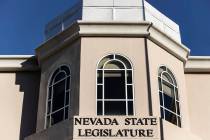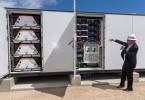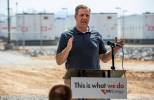Coal starts dirty and ends dirty
Three days before Christmas, 2008, America caught a glimpse of the dangers associated with coal fly ash and coal-based electricity.
A retaining wall for a coal ash disposal pond failed at a coal-fired power plant in Kingston, Tenn., sending more than 1 billion gallons of coal combustion slurry into an adjacent river valley. In the aftermath, approximately 300 acres of land were covered with toxic sludge, three homes were destroyed and many more were damaged, and two rivers were severely contaminated. Toxic heavy metals including arsenic contaminated drinking water and threatened the health of neighboring communities.
Similar to Tennessee, Nevada has a coal waste storage facility for the Reid Gardner coal plant just north of Las Vegas, one that is currently being considered for expansion. They provide storage capacity for four separate coal-burning generators operating at the Reid Gardner facility, the oldest dating back to 1965.
Even though NV Energy has not proposed extending the life of its older boilers, its application to increase capacity at its landfill and wastewater ponds would allow it to keep on burning coal and dumping toxic coal wastes for another 60 years. Thus, the stakes couldn't be greater.
In effect, the Southern Nevada Health District is being asked to grant the private utility capacity to burn and dump for many decades beyond any single operating permit granted by the state. The risks to be imposed on public health, the local and regional environment are far too great.
While it is true that the Reid Gardner facility is not wet-slurry storage like the one in Tennessee that collapsed, it is still a very large, open air facility that stores both dry and wet wastes, including millions of tons of toxic substances that pose real threats to both groundwater and the surrounding airshed.
In fact it has been a source of air and water pollution for years.
Several hundred members of the Moapa tribe live in very close proximity to the storage ponds and landfill, and have experienced the negative impacts firsthand, including contaminated water and toxic dust clouds. Concerns over the subsequent health effects are grounded in science.
Coal combustion waste is the second-largest industrial waste stream in the United States. The ash is often disposed of in a variety of wet ash ponds, dry landfills, inactive dumps or hundreds of abandoned mines. A frequent source of coal ash contamination occurs when it comes in contact with either surface or groundwater sources, thereby threatening biological life dependent on that water, including humans.
Dry storage also poses significant risk to humans when the ash becomes airborne, either inside or outside, and then inhaled.
Coal contains many hazardous elements. But when it is burned, the remaining waste becomes a highly concentrated stew of toxic heavy metals including arsenic, lead, mercury and cadmium. Ingesting high levels of arsenic is deadly, while chronic exposure to arsenic in drinking water can lead to several types of cancer including skin, bladder and lung cancer. Both lead and mercury damage the nervous system and can cause learning disabilities and developmental delays in the most vulnerable among us, our children.
A recent report by the group Physicians for Social Responsibility titled "Coal Ash -- The toxic threat to our health and environment" provides an overview of the specific dangers linked with coal ash and the scale of the problem in the United States. It is recommended reading for anyone concerned about their family's health and can be found at www.psr.org.
In the meantime, the Southern Nevada Health District is scheduled to make a decision at its Oct. 28 meeting. Whether an entity that is charged with protecting the public health should approve a project that could endanger the public health is a fair question.
The Reid Gardner facility poses a clear threat in terms of increased health risks and additional environmental degradation. Fortunately, Nevadans have an opportunity to learn more and let their choice be known in the matter.
That choice should be based on your rights to clean air, clean water and a clean future.
Steven G. Gilbert is director and founder of the Institute of Neurotoxicology and Neurological Disorders (INND) in Seattle. He also serves as chair of the board of directors of the Washington Physicians for Social Responsibility.























